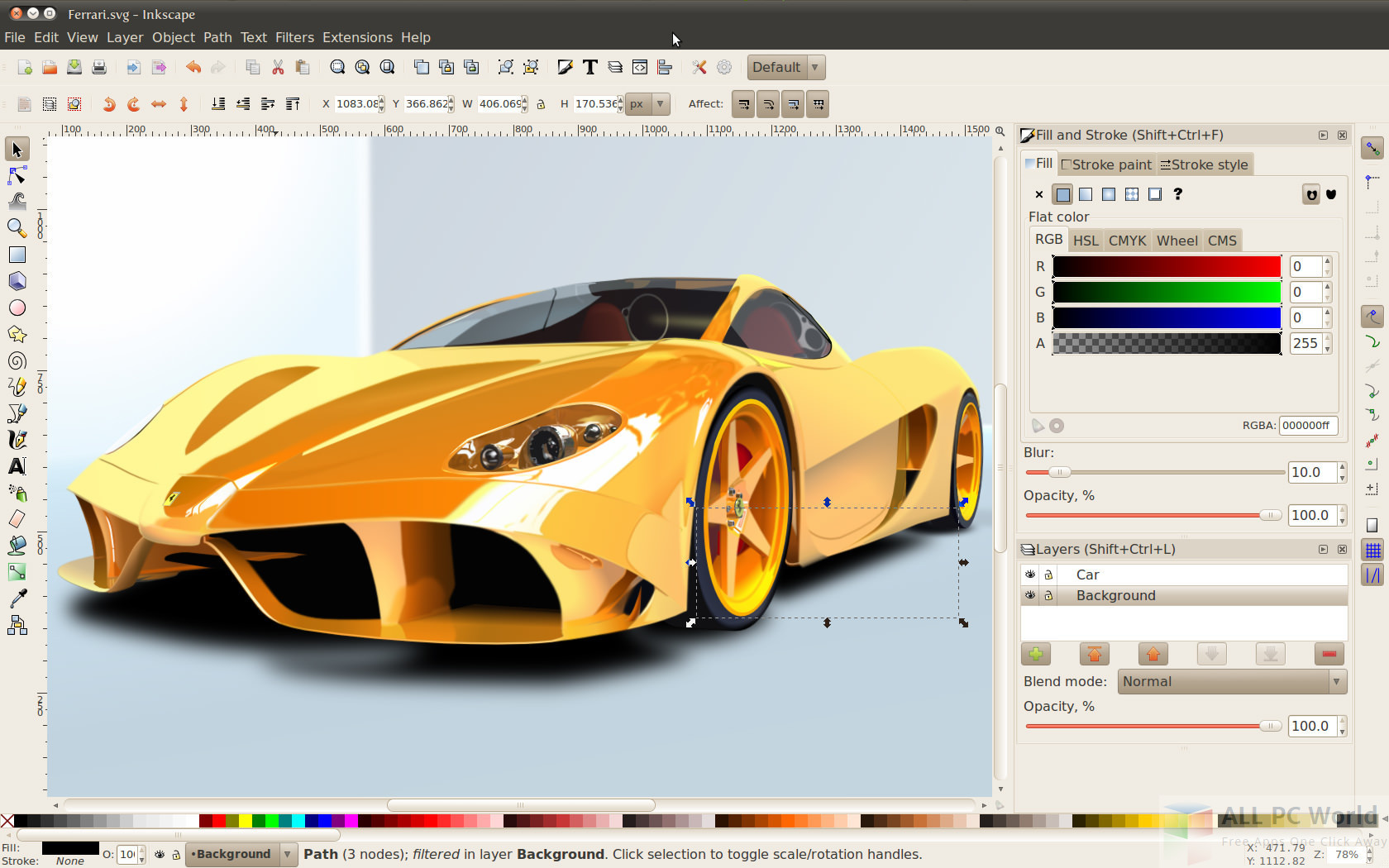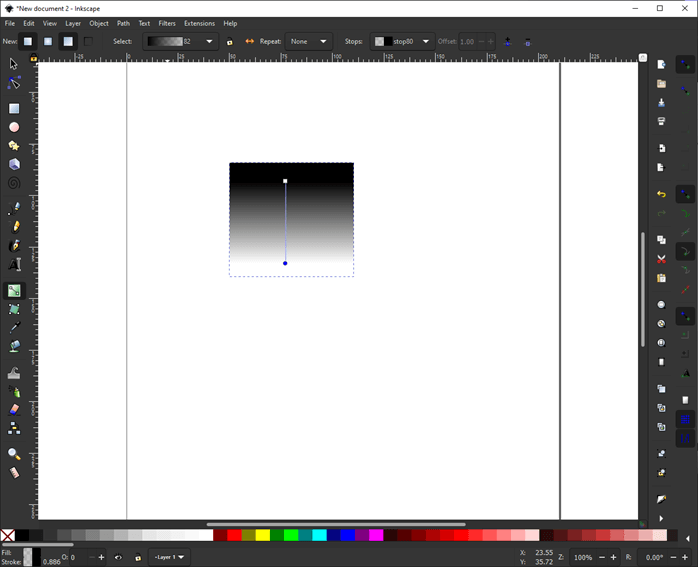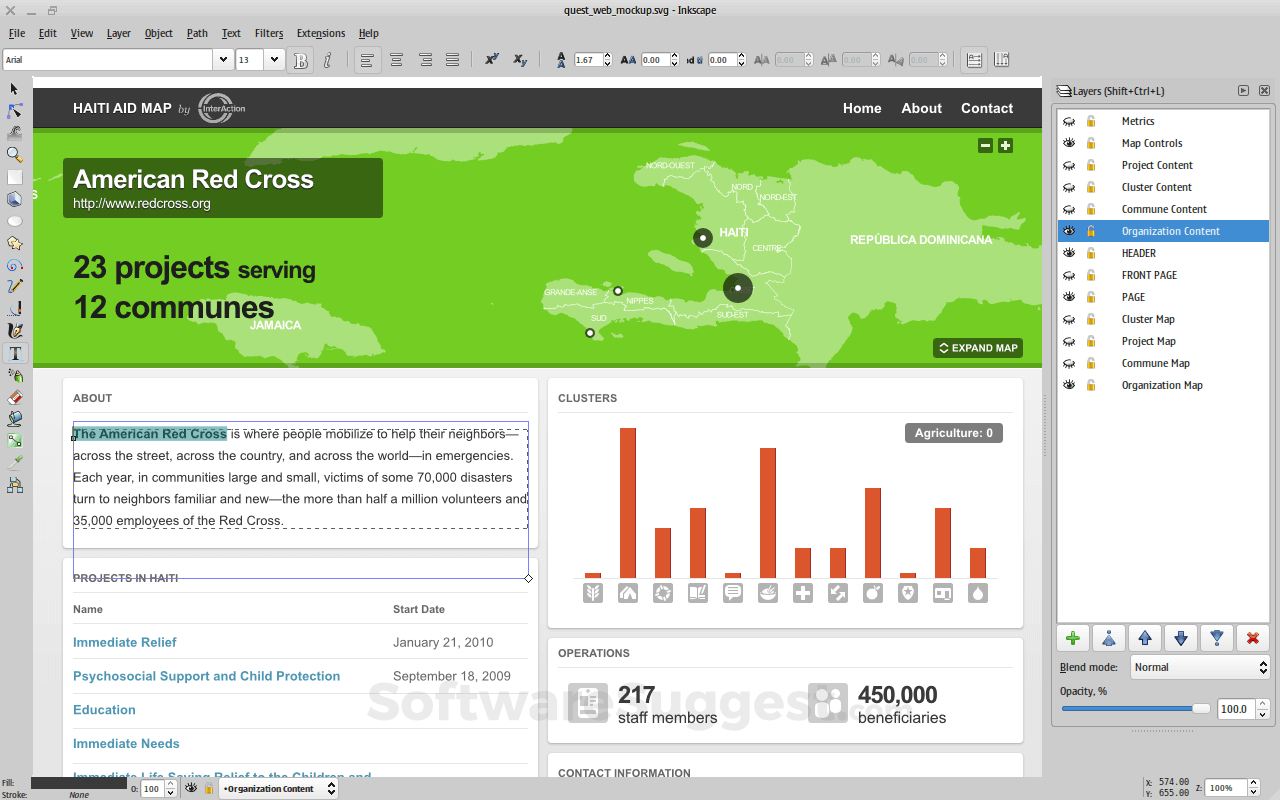

#Inkscape gradient editor plus

Select the rotation handle and move it downward while holding Ctrl key to constraint vertical movement. Click on the object until the rotation handle is visible. Cloned tiles are created using the object’s rotation point.If you want a natural, imperfect look for the particle, enter a positive number in the “randomize” column of each tab, preferably less than 5%.Under the Rotation tab, type *360/14* in Angle per row and hit Enter.Under the Shift tab, set *Shift Y in Per row = -100%*.We’ll make an explosion with 14 particles flying out. Under the Symmetry tab, choose *P1: Simple translation* and set Rows = 14, Columns = 1. For cloning in a circular pattern, use only rows.For now, set the fill color to orange and remove the stroke. Select the bottom nodes of 2 curves and click the “Join the selected nodes” button. Keep in mind that once you’ve chosen that, the clone will become a standalone object and whatever you do to the original won’t be applied to the clone. Once you’re satisfied with the shape of the original, select the clone and click “Cut the select clone’s link to the original” (Shift + Ctrl +G). Whatever change you make to the original will be applied to the clone instantly. Select the original and adjust it to your liking. With the Enable Snapping and Snap Cusp Nodes mode turned on, move the clone to the left until the top nodes of the clone and the original snap. Flip the clone horizontally by pressing H. The selection will switch to the clone, which will stay on top of the original. Yes, you can make a group from just one object.Ĭlick the “Create a Clone of selected object” button. This will automatically adjust the handles of the nodes to maintain a smooth curve. Using the Editing Path by Nodes tool (F2), select the 2 middle nodes and click the “Make selected nodes auto-smooth” ( Shift + A).By default, all of the nodes will be cusp nodes. Don’t worry about the shape yet, but pay attention to the direction. Using the Bezier tool (B), draw a line consisting of 4 nodes as below.Choose a dark blue for the start and a lighter shade for its end The gradient start is always a square and the stop a circle. Click on where the gradient should begin, hold and drag, and release where it should end.With the rectangle selected, click the Create and edit gradients tool.The rectangle will be automatically snapped to the page border. Draw a rectangle (F4) starting from the top left corner of the page.Turn on Enable Snapping and Snap to page border on the side panel.In the Document Properties Dialogue (**Shift + Ctrl+D**), set up the document as A4, landscape.

After finishing writing the tutorial, I realized that it didn’t look as good as I had envisioned it, but since I’m done with it, I’ll post the step-by-step instructions anyway. Searching for fireworks tutorial in Inkscape didn’t yield much result so I had to figure it out on my own and document the whole process. I was feeling exhilarated as 2018 approached and I decided to make a fireworks background.


 0 kommentar(er)
0 kommentar(er)
